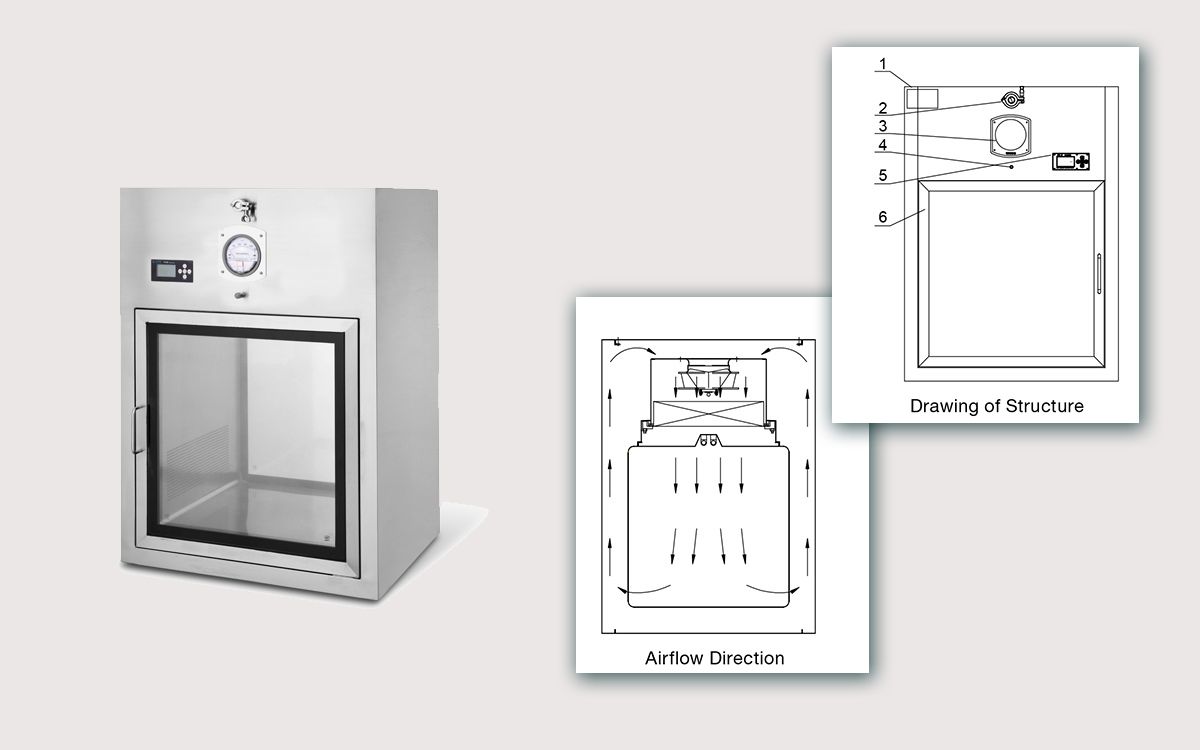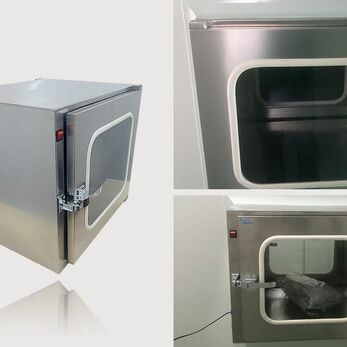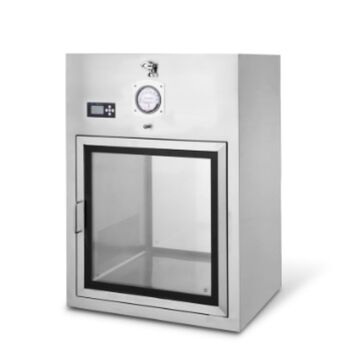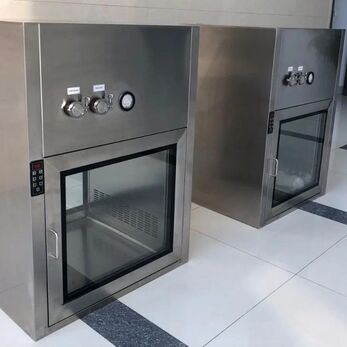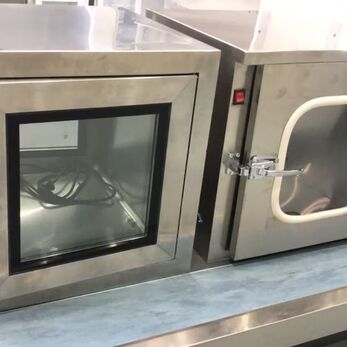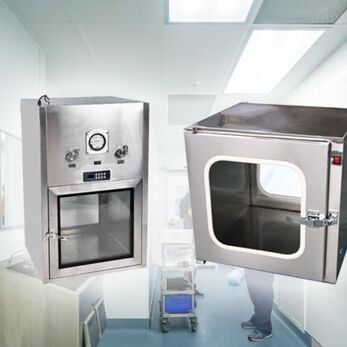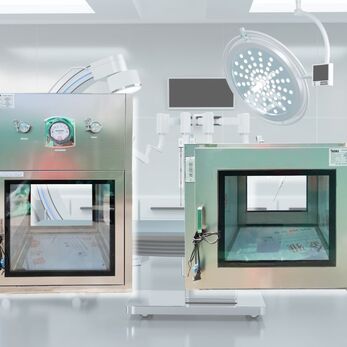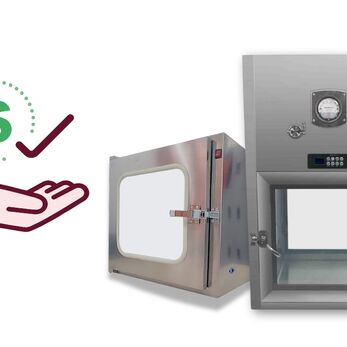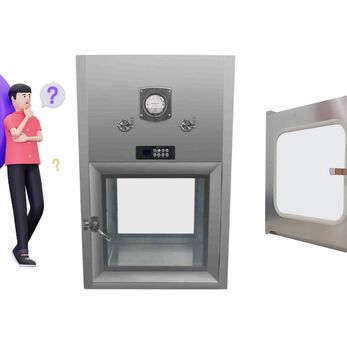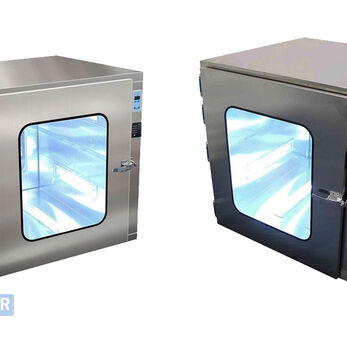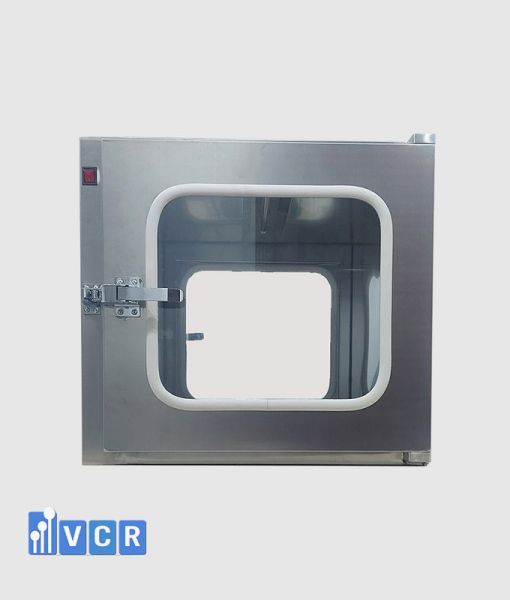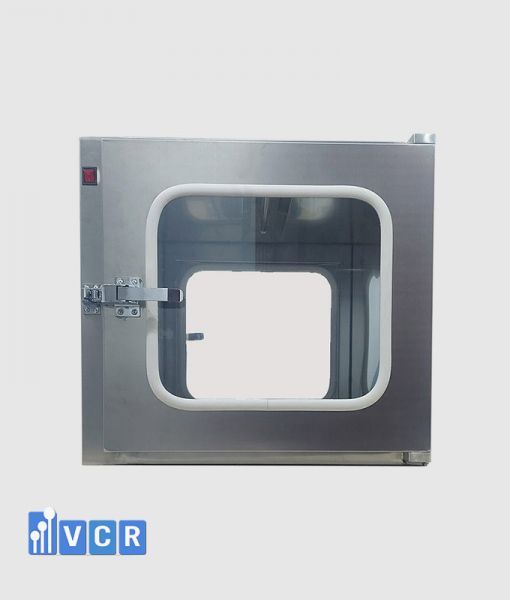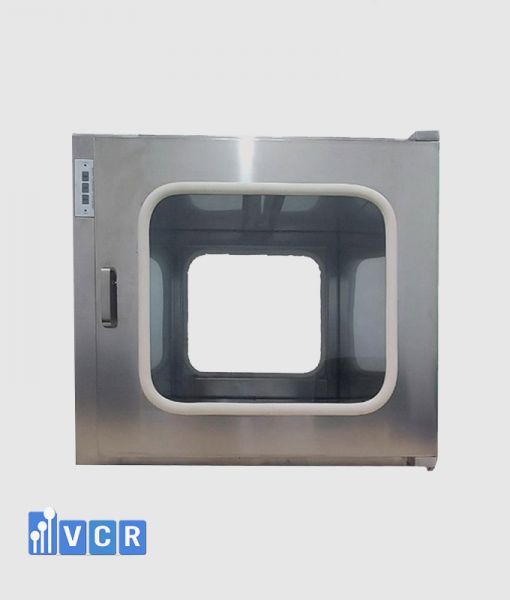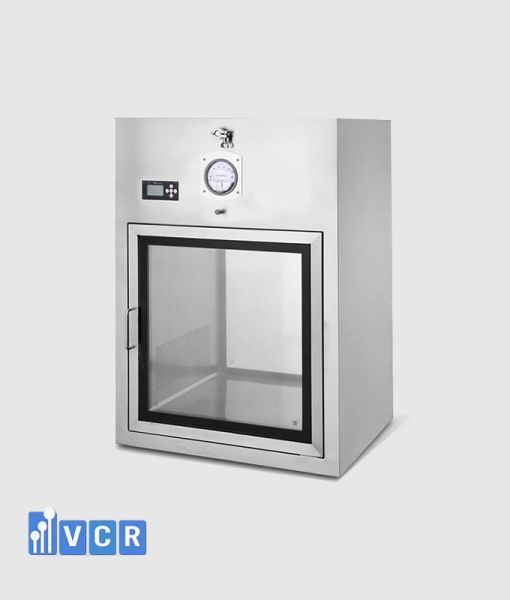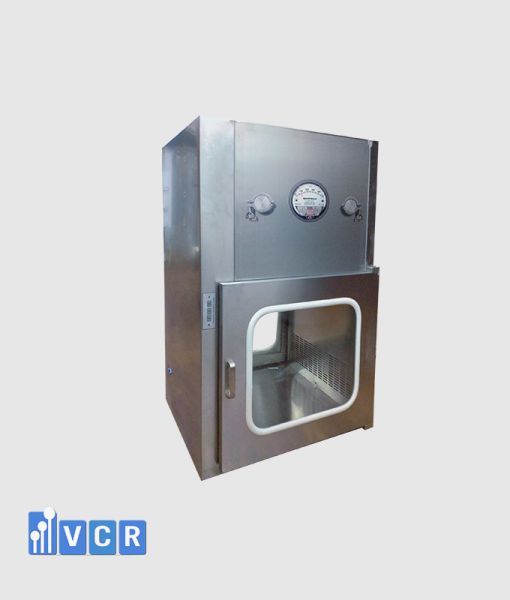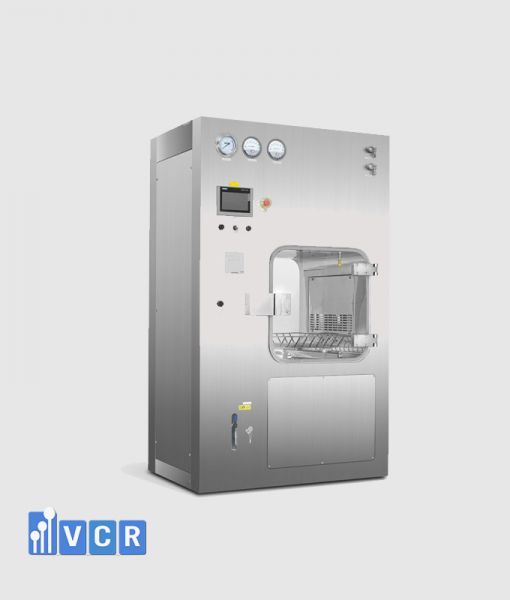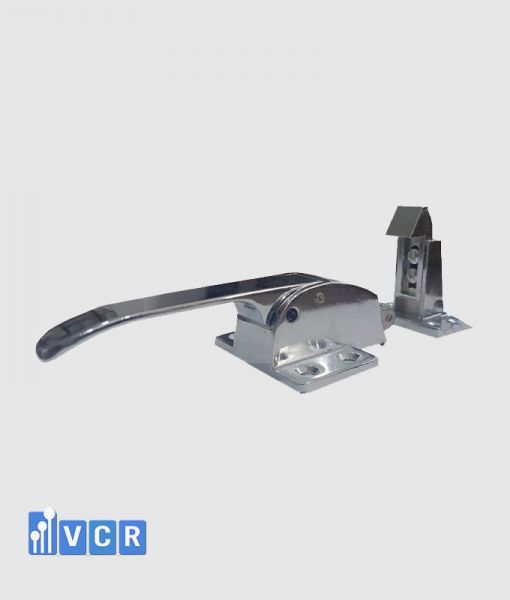Pass boxes, crucial components in controlled environments, are categorized into two types based on their working principles: static pass boxes and dynamic pass boxes.
Each type exhibits distinct designs and structures, and in this comprehensive analysis, we will delve into the intricacies of pass box design and construction.
1. Static Pass Box Structure
Body:
The body of a static pass box is composed of an outer casing and an inner chamber. The inner chamber, constructed from 304 stainless steel, ensures durability and cleanliness. The outer casing can be crafted from various materials such as 304 stainless steel, 201 stainless steel, or powder-coated steel. When procuring a pass box, consideration of both the external and internal dimensions is imperative for optimal functionality.
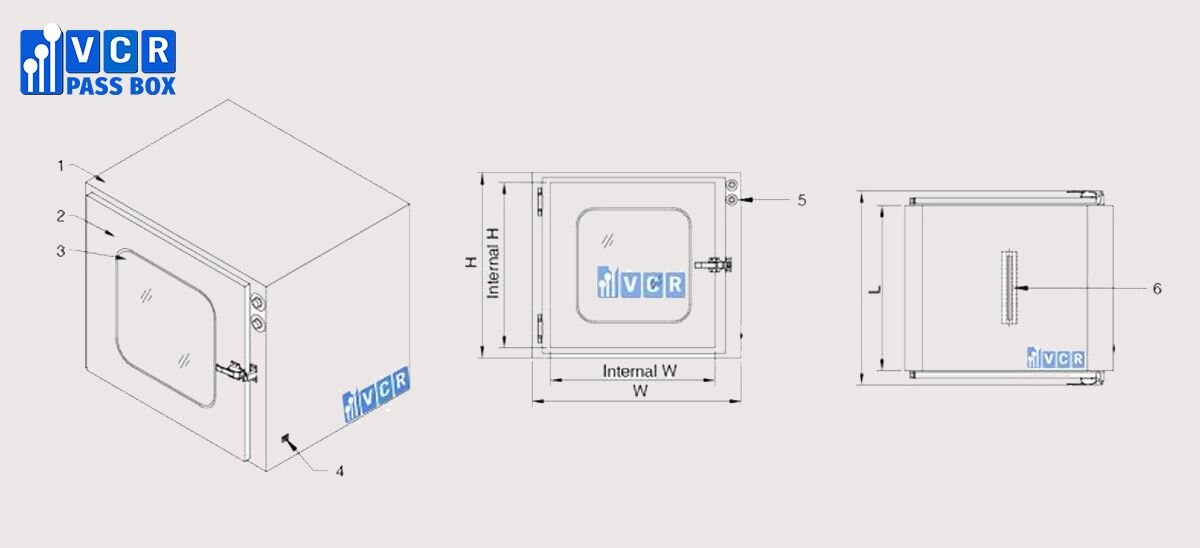
See more: How to choose Pass Box for Cleanroom
Doors:
Equipped with two doors, each featuring tempered glass windows sealed by durable feather-edge rubber, static pass boxes effectively prevent airborne particle contamination. Door handles, specific to the type of interlock system employed, enhance accessibility. The pass box hinges, made of robust SUS 304 stainless steel, ensure durability and ease of cleaning.
Interlock System:
An integral part of the pass box, the interlock system prevents the simultaneous opening of both doors, mitigating the risk of cross-contamination in clean rooms. Two types of interlock systems exist: mechanical interlock systems and electronic interlock systems.
UV Lamp:
Positioned within the pass box, UV lamps facilitate the disinfection of transferred objects before entering the cleanroom. In static pass boxes with electronic interlock systems, a control system display, light on/off switches, power sockets, and wiring for the light and electronic interlock system are included.
See more: Pass box function
2. Dynamic Pass Box Structure
Also referred to as self-cleaning pass boxes, dynamic pass boxes introduce additional features to the structure compared to their static counterparts.
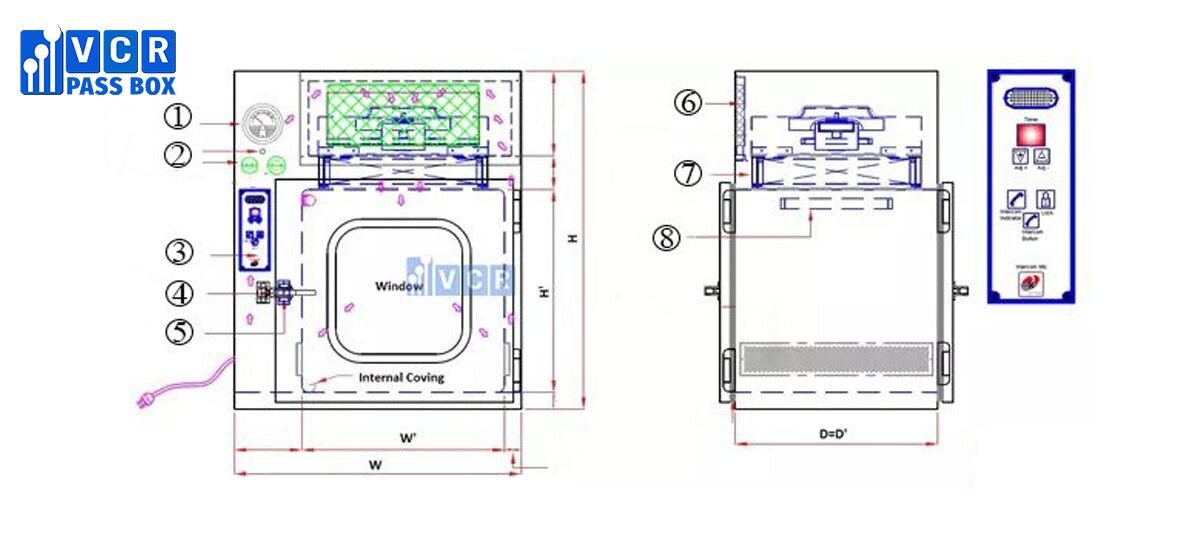
Fan:
The dynamic pass box integrates a fan that draws air and directs it through a HEPA filter. This ensures that clean air enters the chamber, contributing to the sterilization of the objects within.
Pre-filter:
Utilizing a G4 filter, the pre-filter in dynamic pass boxes effectively removes larger particles from the air.
HEPA Filter:
Dynamic pass boxes employ H13 or H14 filters with filtration efficiency up to 99.995%, enhancing their capability to maintain a sterile environment.
DOP/PAO Test Port:
To facilitate HEPA filter leak tests and particle count assessments, dynamic pass boxes are equipped with a DOP/PAO test port.
Differential Pressure Gauge:
Included in the pass box, the differential pressure gauge monitors pressure differentials across the HEPA filter, ensuring optimal functionality.
In conclusion, this detailed exploration of pass box design and structure aims to provide a comprehensive understanding of both static and dynamic pass boxes. Whether addressing the need for a standard cleanroom pass box or a self-cleaning variant, this article serves as a valuable resource for those seeking insights into the intricate components and features of pass boxes.
See more:




